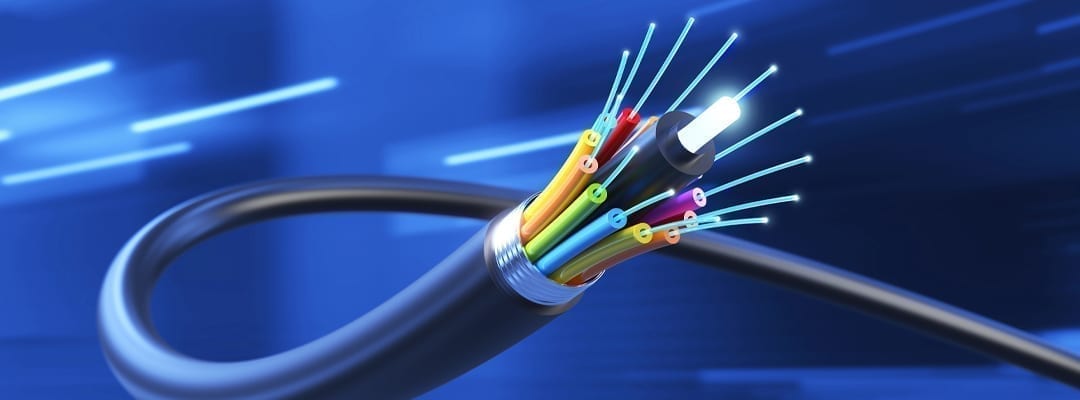
Fiber optic cables are an impressive form of technology, but you must follow a few safety procedures while installing and maintaining them.
These long, hair-thin strands of glass are arranged in bundles and used to transmit light signals over long distances. The strands are smaller than a hypodermic needle and have a higher tensile strength than steel.
Check out these fiber optic safety procedures based on information from the Fiber Optic Association.
Wear safety glasses or googles
Fiber optic shards and splinters can be dangerous if they get into your eyes. Treat fiber optic splinters the same as glass splinters. Always wear safety glasses when working with fiber optics and use side shields for full protection.
Keep food and beverages away from work areas
Fiber particles can easily get into food or drink and be swallowed. If ingested, they could become embedded in your digestive system and cause internal hemorrhaging.
Even if you keep your work area clean, the particles can easily be transferred from clothes to food and drinks. You can protect yourself by wearing disposable aprons to prevent fiber particles from getting on your clothing.
Never look directly into the end of fiber cables
It’s important to be positive there isn’t a light source at the other end of the cable, so make sure the fiber is at least 6 inches away from your eyes. A fiber optic power meter can help you make sure the fiber is dark.
Additionally, if you’re using a microscope, make sure it’s electronic so you can see the image on a small screen instead of needing to look directly at it.
Also, if you’re using a tool to examine installed fiber connectors or ensure terminations are smooth and clean, be mindful about what you touch. There’s a chance oil from your fingertips could heat up and burn the ceramic.
Don’t touch your eyes
Until your hands have been thoroughly washed, it’s important to not touch your eyes while working with fiber optic systems. On that note, contact lens wearers must not handle their lenses until they have thoroughly washed their hands.
Properly dispose of fiber and cable scraps
A big part of disposing of fiber and cable scraps involves keeping track of these materials. When you cleave fiber (generally in the fusion or termination process), small scraps of glass are produced. These scraps are very dangerous and can easily penetrate your skin.
Fiber glass shards can be hard to see, so it helps to work on black work mats and wear disposable lab aprons. This way, finding scraps is easier.
Other fiber optic safety procedures from the Fiber Optic Association include:
- Only work in well-ventilated areas.
- Keep all combustible materials safely away from fusion splicers.
- When finished with a fiber optics lab, dispose of all scraps by placing them in a properly marked container for disposal.
- Thoroughly clean your work area.
This article was originally published on October 12, 2017. It was updated and republished on July 6, 2021.
Read more:
What the Five Types of Safety Controls Look Like in Practice